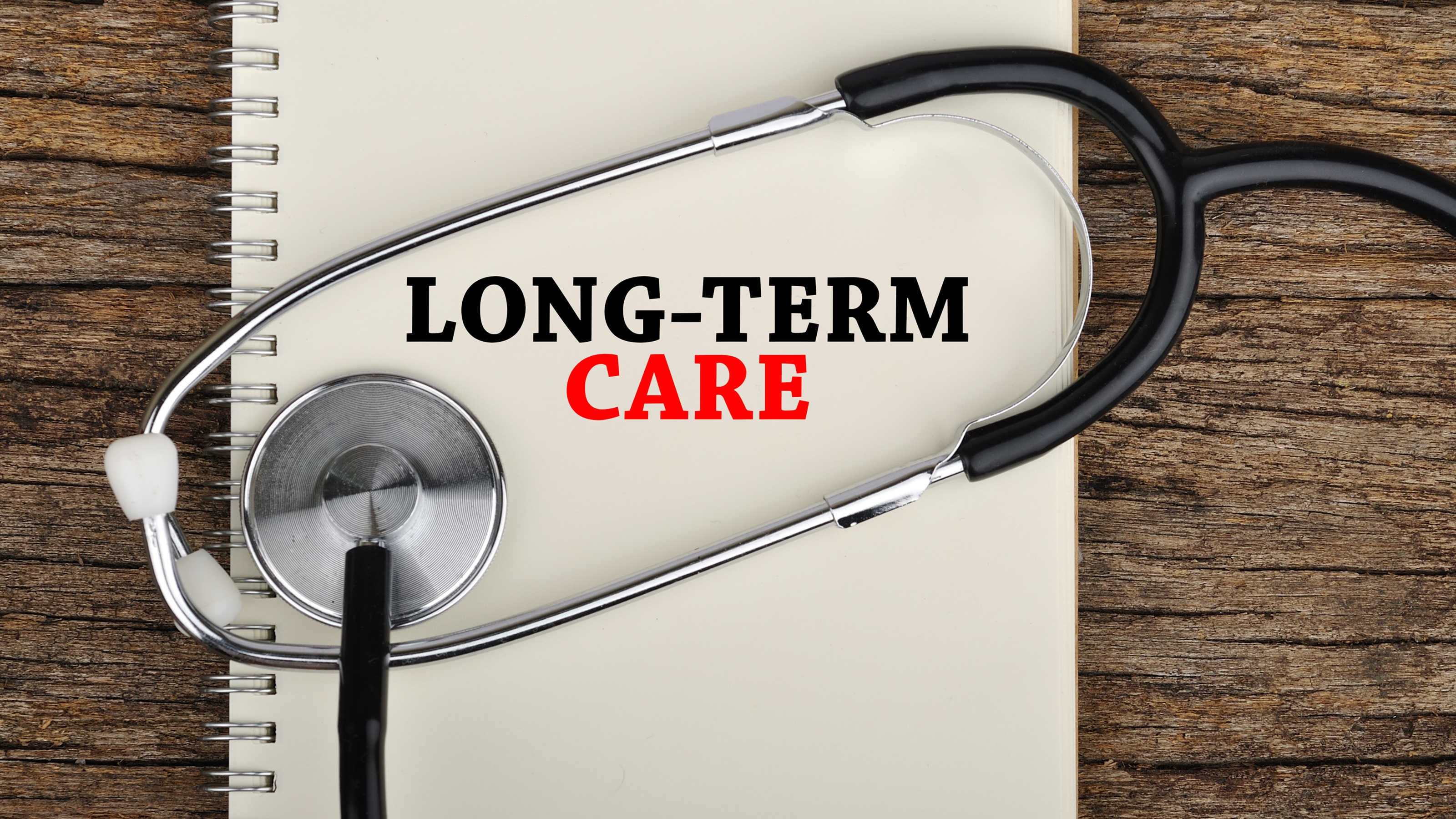I'm a Financial Planner: Here Are Some Long-Term Care Insurance Tips for Every Age
Strategies include adding riders to life insurance for younger individuals and considering hybrid or traditional long-term care policies for those in their mid-50s and 60s.


Few things can disrupt a retirement like the need for long-term care.
Long-term care comes into play when you need help with daily living activities such as bathing, eating or dressing.
The cost of care can vary by state and facility, but Genworth and CareScout estimate the national average cost for a semiprivate room in a nursing home in 2025 is $9,555 per month, or $114,660 per year.
From just $107.88 $24.99 for Kiplinger Personal Finance
Become a smarter, better informed investor. Subscribe from just $107.88 $24.99, plus get up to 4 Special Issues

Sign up for Kiplinger’s Free Newsletters
Profit and prosper with the best of expert advice on investing, taxes, retirement, personal finance and more - straight to your e-mail.
Profit and prosper with the best of expert advice - straight to your e-mail.
By 2045, that cost is expected to jump to $17,258 per month, or $207,096 per year.
The Kiplinger Building Wealth program handpicks financial advisers and business owners from around the world to share retirement, estate planning and tax strategies to preserve and grow your wealth. These experts, who never pay for inclusion on the site, include professional wealth managers, fiduciary financial planners, CPAs and lawyers. Most of them have certifications including CFP®, ChFC®, IAR, AIF®, CDFA® and more, and their stellar records can be checked through the SEC or FINRA.
And that is for one person — double the cost if a husband and wife need care at the same time. This is a problem for every generation.
Here's how you can prepare for long-term care costs by age.
People younger than mid-50s
Younger people who need life insurance for their family should look at long-term care riders as an add-on — this can help them later in life.
I usually recommend my younger clients consider a mix of term and permanent whole life insurance to help pay for the kids' college or pay off the mortgage if one spouse dies. I also recommend adding on the long-term care rider.
The long-term care rider allows the insured to use some of the life insurance death benefit for long-term care costs, assuming the insured qualifies for long-term care (usually defined as the inability to perform two out of six daily living activities).
I usually find the cost of the rider to be small relative to the premium, but that will depend on the policy and the client's age and health.
Either way, I think this is a nice two-part solution at least worth reviewing — younger people have the life insurance they need for their family, and the long-term care rider adds protection they may need in the future.
People in their mid-50s
Later to middle-aged people may find whole life insurance to be cost prohibitive. Here, I recommend my clients look at hybrid long-term care solutions. These are life insurance policies that have an extra kicker for long-term care costs.
Hybrid policies have several benefits:
- They come with guaranteed premiums — the insurance company cannot raise the cost
- They have a return-of-premium feature —if you don't use the coverage, you can usually get back a healthy amount of your premium
- There is also a death benefit if you don't use the long-term care benefits
The downside is the premium commitment may be high or higher than some anticipated. You may not be able to buy all the coverage you want, but then again, some coverage may be better than no coverage.
There is also creditor risk — the insurance company could become insolvent — so you want to work with a reputable company.
I advise clients to schedule their hybrid insurance premiums during working years so they can have a paid-up policy by retirement. Or they can purchase a one-time lump sum and be done with it.
The law now allows you to transfer old whole life insurance policies tax-free into hybrid policies, via a 1035 exchange. Medical underwriting is needed for the new policy.
People in their 60s
Long-term care insurance quickly becomes less attractive as we age — the cost can be quite high. There may also be medical conditions that preclude getting coverage.
Traditional long-term care policies may be an option. These are pay-as-you-go policies. However, the premium is not guaranteed, meaning the insurance company can increase it.
If you are looking at a traditional long-term care policy, you may want to review your state's partnership plan. Partnership plans allow you to exclude the benefits paid from a traditional long-term care policy from Medicaid eligibility rules.
For example, if your state partnership long-term care plan paid $200,000 in long-term care benefits, then $200,000 of your assets — IRA, 401(k), bank account — are excluded from the Medicaid eligibility calculation. That means you don't have to spend down all your assets to qualify for Medicaid.
Looking for expert tips to grow and preserve your wealth? Sign up for Building Wealth, our free, twice-weekly newsletter.
Partnership plans are not perfect. Some states have few participating insurance carriers. Certain features also need to be included, such as inflation protection, which is helpful, but can be expensive in your 60s.
I think at this age, it may come down to self-insuring most of the risk and looking at some scaled-down long-term care insurance to cover the worst-case scenario, like an extended need for care.
Summing it up
Ignoring the need for long-term care may cost your future self or put a burden on those around you. Self-insuring the cost — using your own assets — may be a viable plan for some.
But the risk is unknown — what if you need care for 10 years? What if your spouse is unable to help? What will the cost look like by the time you need care?
Women face a unique challenge since they may live longer, and living longer increases the odds for long-term care.
There are a lot of unknowns. For these reasons, no matter our age, we need to start having a conversation and developing a plan.
For more information, email the author at maloi@sfr1.com or register for an upcoming Long-Term Care Webinar on July 15 or July 22.
Investment advisory and financial planning services are offered through Summit Financial LLC, a SEC Registered Investment Adviser, 4 Campus Drive, Parsippany, NJ 07054. Tel. 973-285-3600. This material is for your information and guidance and is not intended as legal or tax advice. Clients should make all decisions regarding the tax and legal implications of their investments and plans after consulting with their independent tax or legal advisers. Individual investor portfolios must be constructed based on the individual's financial resources, investment goals, risk tolerance, investment time horizon, tax situation and other relevant factors. Past performance is not a guarantee of future results. The views and opinions expressed in this article are solely those of the author and should not be attributed to Summit Financial LLC. Summit is not responsible for hyperlinks and any external referenced information found in this article.
Related Content
- How to Pay for Long-Term Care
- 10 Things You Should Know About Long-Term Care Insurance
- How to Manage Longevity Risk in Retirement
- Deduct Expenses for Long-Term Care on Your Tax Return
- One Retiree's Story of How She Built Her Retirement Nest Egg
Profit and prosper with the best of Kiplinger's advice on investing, taxes, retirement, personal finance and much more. Delivered daily. Enter your email in the box and click Sign Me Up.

Michael Aloi is a CERTIFIED FINANCIAL PLANNER™ Practitioner and Accredited Wealth Management Advisor℠ with Summit Financial, LLC. With 21 years of experience, Michael specializes in working with executives, professionals and retirees. Since he joined Summit Financial, LLC, Michael has built a process that emphasizes the integration of various facets of financial planning. Supported by a team of in-house estate and income tax specialists, Michael offers his clients coordinated solutions to scattered problems.
-
 'Humbug!' Say Consumers, Despite Hot GDP: Stock Market Today
'Humbug!' Say Consumers, Despite Hot GDP: Stock Market Today"The stock market is not the economy," they say, but both things are up. Yet one survey says people are still feeling down in the middle of this complex season.
-
 The SEC Is Concerned for Older Investors and Retirement Savers. Here's What You Should Know
The SEC Is Concerned for Older Investors and Retirement Savers. Here's What You Should KnowThe SEC focusing on older investors, retirement and college savers, and private securities. Here's how those changes impact you.
-
 Vesting, Catch-Ups and Roths: The 401(k) Knowledge Quiz
Vesting, Catch-Ups and Roths: The 401(k) Knowledge QuizQuiz Test your understanding of key 401(k) concepts with our quick quiz.
-
 'Humbug!' Say Consumers, Despite Hot GDP: Stock Market Today
'Humbug!' Say Consumers, Despite Hot GDP: Stock Market Today"The stock market is not the economy," they say, but both things are up. Yet one survey says people are still feeling down in the middle of this complex season.
-
 The SEC Is Concerned for Older Investors and Retirement Savers. Here's What You Should Know.
The SEC Is Concerned for Older Investors and Retirement Savers. Here's What You Should Know.The SEC focusing on older investors, retirement and college savers, and private securities. Here's how those changes impact you.
-
 Vesting, Catch-Ups and Roths: The 401(k) Knowledge Quiz
Vesting, Catch-Ups and Roths: The 401(k) Knowledge QuizQuiz Test your understanding of key 401(k) concepts with our quick quiz.
-
 Why You Should Pay Attention to Company Guidance
Why You Should Pay Attention to Company GuidanceUnderstanding how corporate profit forecasts affect analysts’ estimates and stock ratings can help you make investment decisions.
-
 How to Protect Yourself and Others From a Troubled Adult Child: A Lesson from Real Life
How to Protect Yourself and Others From a Troubled Adult Child: A Lesson from Real LifeThis case of a violent adult son whose parents are in denial is an example of the extreme risks some parents face if they neglect essential safety precautions.
-
 To Build Client Relationships That Last, Embrace Simplicity
To Build Client Relationships That Last, Embrace SimplicityAs more automation becomes the norm, you can distinguish yourself as a financial professional by using technology wisely and prioritizing personal touches.
-
 Client Demand Is Forcing Financial Advisers to Specialize: How to Deliver
Client Demand Is Forcing Financial Advisers to Specialize: How to DeliverThe complexity of wealthy clients' needs — combined with AI and consumer demand — suggests the future of financial planning belongs to specialized experts.
-
 Stocks Rise to the Spirit of the Season: Stock Market Today
Stocks Rise to the Spirit of the Season: Stock Market TodayInvestors, traders and speculators are beginning to like the looks of a potential year-end rally.